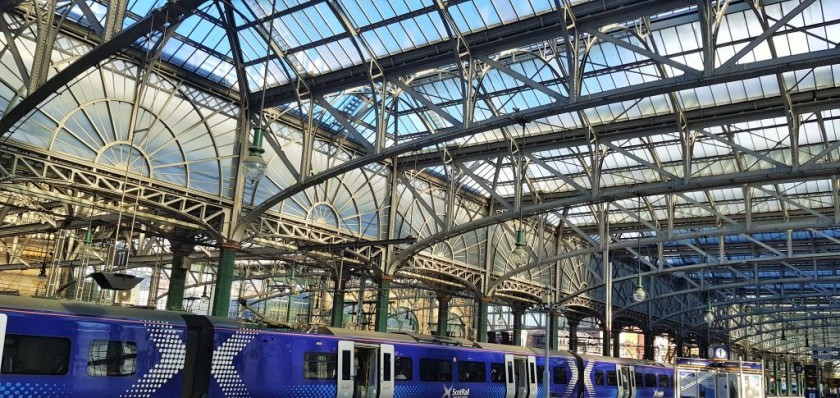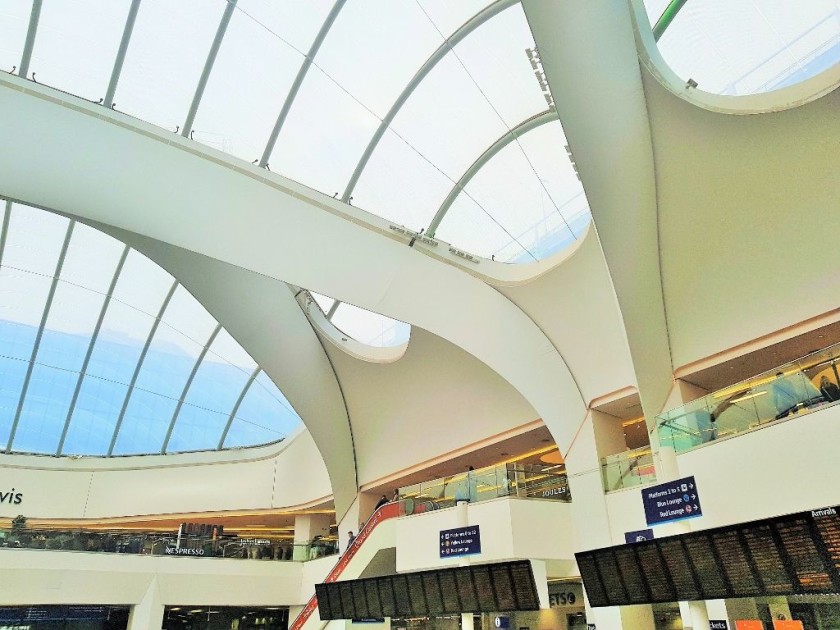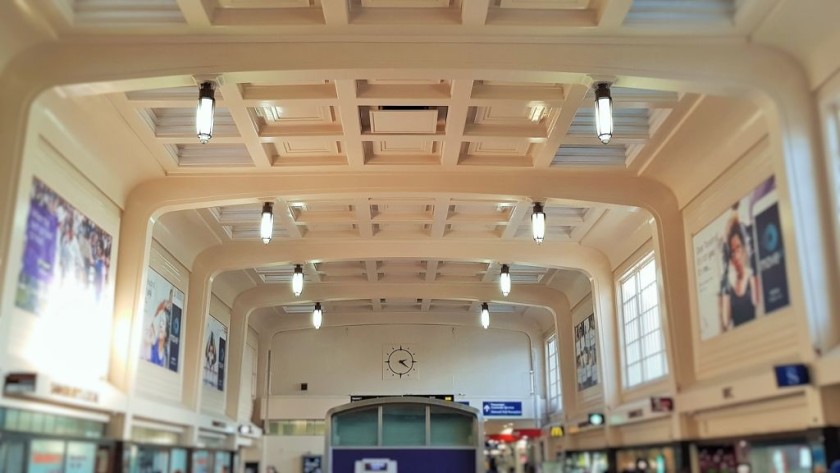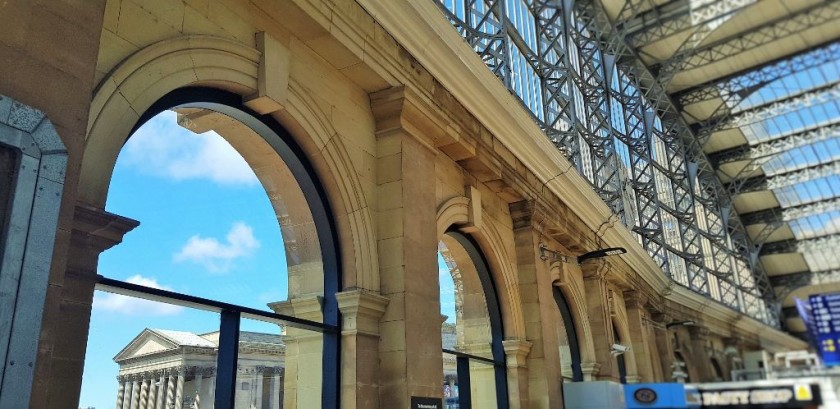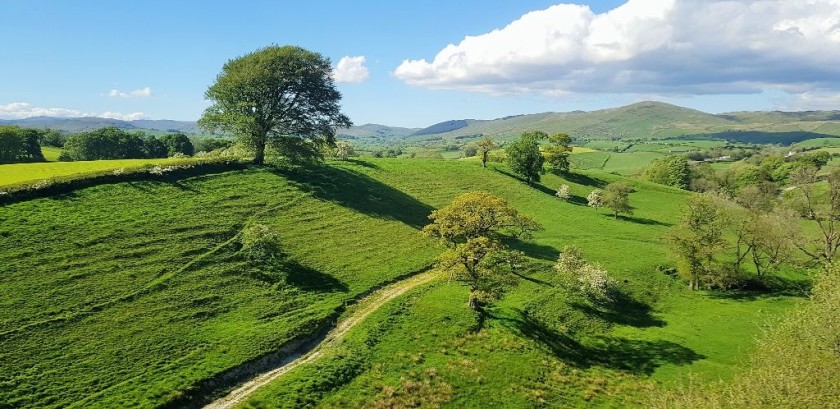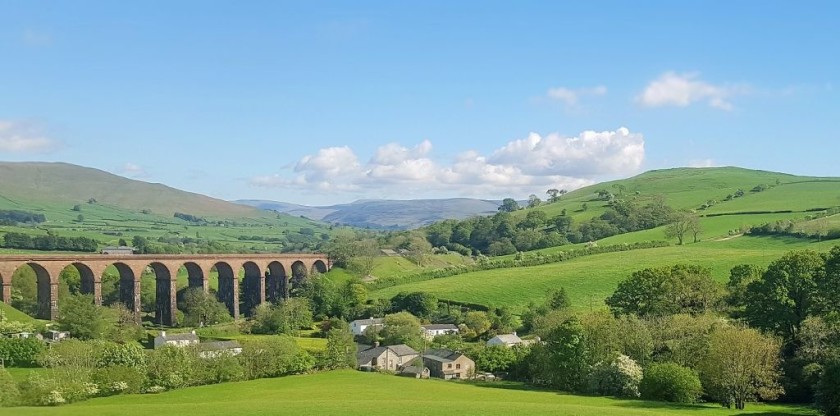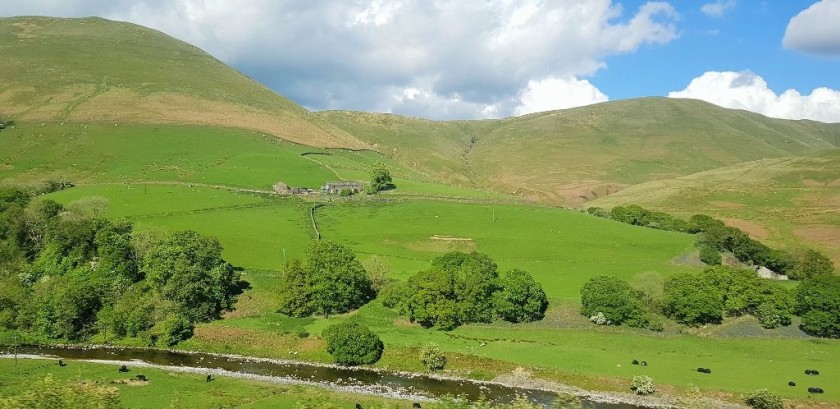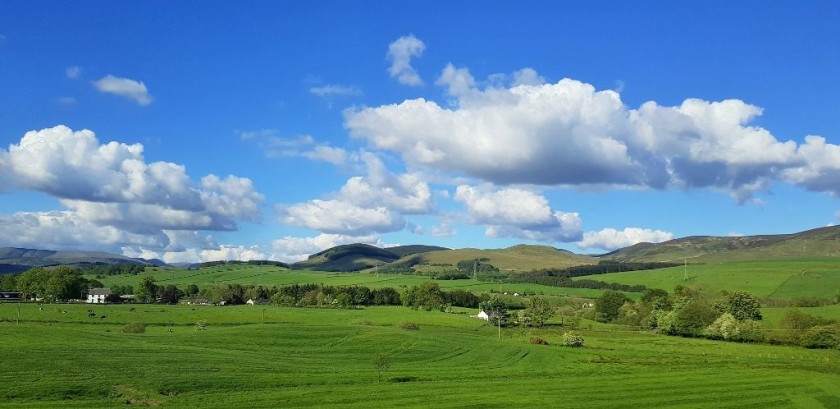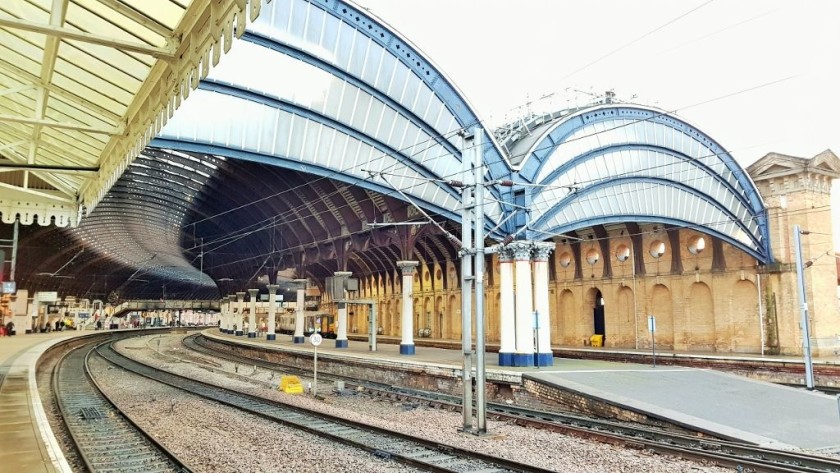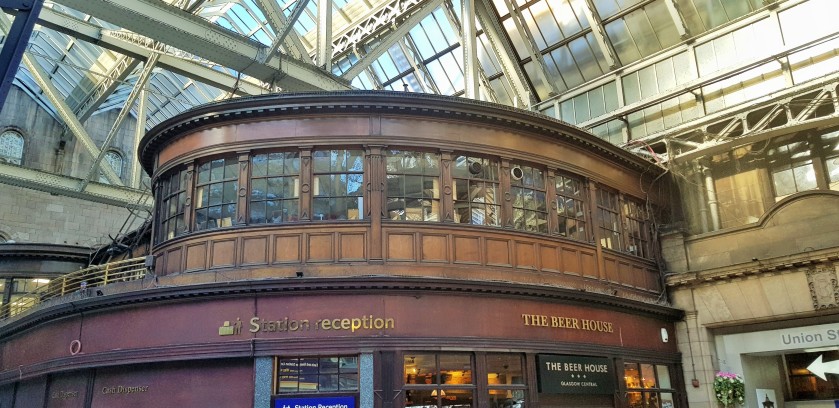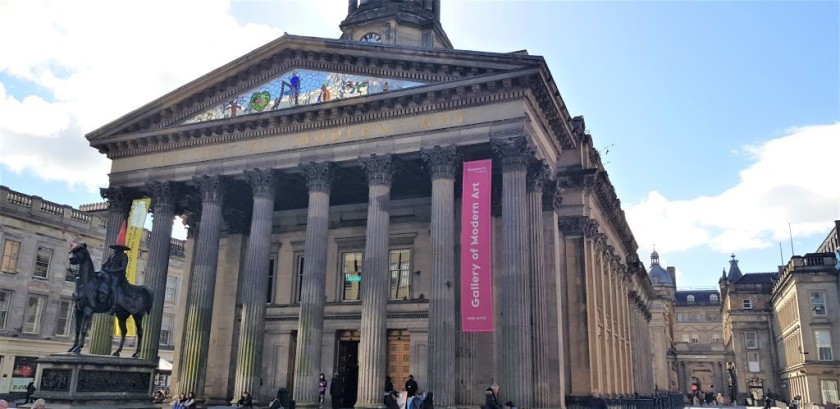Related Content
Content
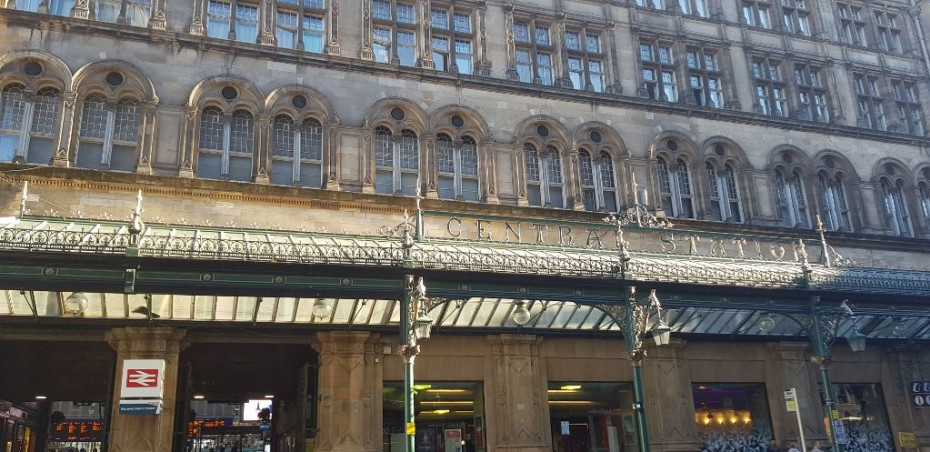
Glasgow Central (Glasgow)
This guide to Glasgow Central station explains what to look out for when departing and arriving by train and connects you to all the relevant info.
Share
At a Glance
Services
Left Luggage
Travel Information Desk
First Class Lounge
Local Tourism Information
Accessibility
Step Free
Misc
Terminus Station
Onward Travel
Taxi Rank
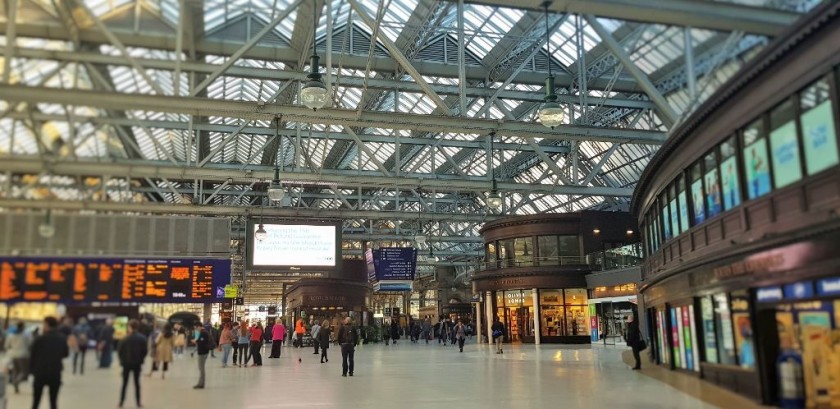
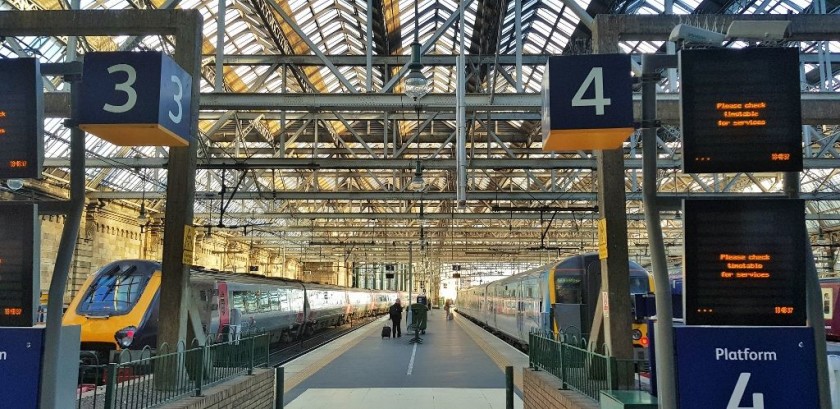
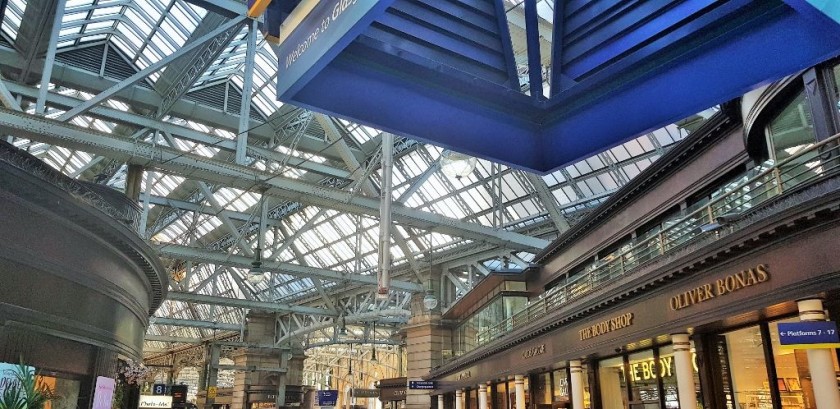
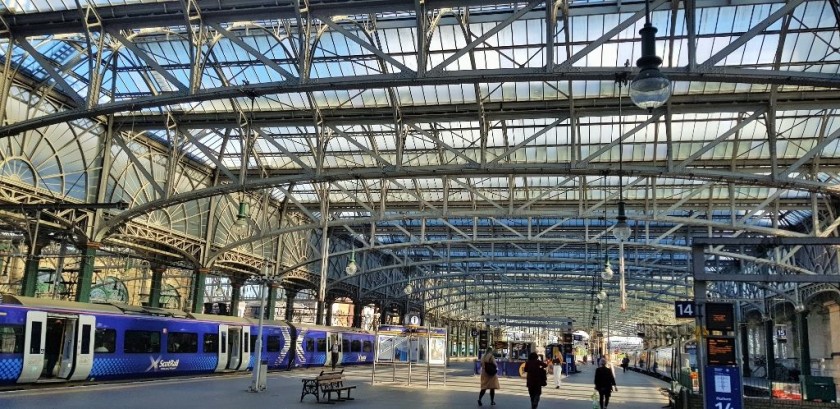
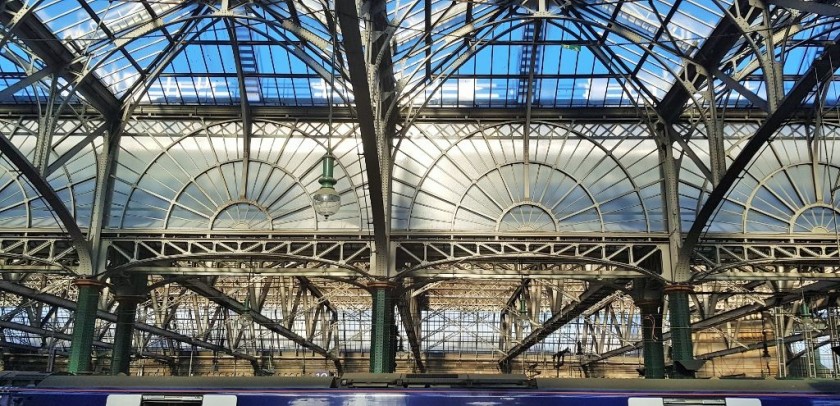
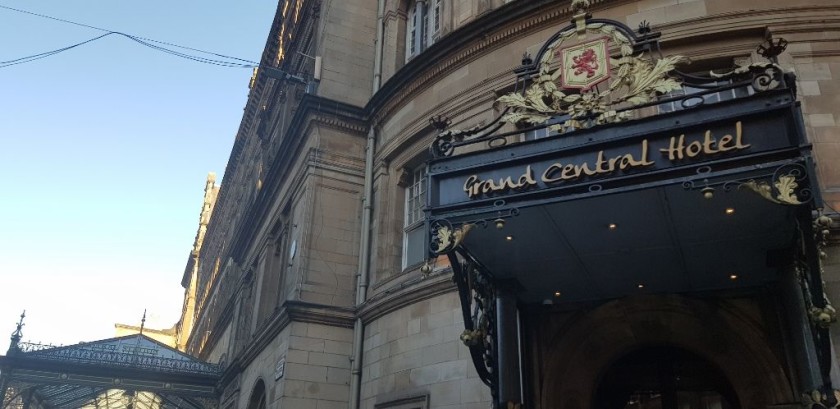
Helpful Links
Train service summary:
The typical pattern of train departures from Glasgow is:
To destinations in England from Glasgow Central:
- to London Euston = 1 x train per night operated by Caledonian Sleeper
- to London Euston via Carlisle, Penrith North Lakes, Oxenholme - The Lake District, Lancaster, Preston and Warrington Bank Quay = 1 x train per hour operated via Avanti West Coast
- to London Euston via Carlisle, Penrith North Lakes, Oxenholme - The Lake District, Lancaster, Preston, Warrington Bank Quay, Crewe, Stafford, Wolverhampton, Birmingham New Street, Birmingham International, Coventry and Milton Keynes = up to 4 x trains per day operated by Avanti West Coast
- to Manchester Airport via Carlisle, Penrith North Lakes, Oxenholme - The Lake District, Lancaster, Preston and Manchester Piccadilly = up to 4 x trains per day operated operated by Trans Pennine Express
- to Liverpool via Carlisle, Penrith North Lakes, Oxenholme - The Lake District, Lancaster and Preston = on Monday to Saturday 1 x train per day operated operated by Trans Pennine Express
- to Plymouth via Edinburgh, Berwick upon-Tweed, Newcastle, York, Leeds, Sheffield, Derby, Birmingham New Street, Cheltenham, Bristol Parkway, Bristol Temple Meads, Taunton, Exeter St Davids and Newton Abbot = 1 x train per day operated by CrossCountry
- to London King's Cross via Edinburgh, Berwick upon-Tweed, Newcastle, York and Peterborough = 1 x train per day on Monday to Saturday operated by LNER
The train services call at additional stations to those listed above.
To destinations in Scotland from Glasgow Central
All services operated by ScotRail
- to Ardrossan Harbour (for Arran) = 1 x train per hour
- to Largs via Ardrossan = 1 x train per hour
- to Ayr via Troon and Prestwick Airport = 2 x trains per hour
- to Edinburgh via Carstairs (around 1hr 10 mins) = 1 x train in every other hour on Monday to Friday
- to Edinburgh via West Calder (around 1hr 5mins to 1hr 30min ) = 1 or 2 x trains per hour
- to Dumfries, Gretna Green and on to Carlisle = up 8 x trains per day on Monday to Saturday; 2 x trains per day on Sunday
- to Lanark = 1 or 2 x trains per hour
- to Wemyss Bay (for Bute) = 1 or 2 x trains per hour
The train services call at additional stations to those listed above.
To destinations in Scotland from Glasgow Queen St:
All services operated by ScotRail
- to Aberdeen via Dundee, Arbroath and Stonehaven = 1 x train per hour on Monday to Saturday; = 11 x trains per day on Sunday
- to Dundee via Perth = 1 or 2 x trains per hour
- to Edinburgh via Falkirk (around 48mins) = 2 to 4 x trains per hour
- to Inverness via Pitlochry and Aviemore = 5 x trains per day on Monday to Saturday; = 3 x trains per day on Sunday
- to Mallaig via Arrochar & Tarbet, Crianlarich, Rannoch, Fort William and Glenfinnan = 4 x trains per day on Monday to Saturday; = 2 x trains per day on Sunday
- to Oban via Arrochar & Tarbet, Crianlarich and Connel Ferry = 6 x trains per day on Monday to Saturday; = 3 x trains per day on Sunday
The train services call at additional stations to those listed above.
Live departures can be looked up here
Good to know
The primary station in Scotland’s largest city has high passenger satisfaction scores and when encountering Glasgow Central it’s easy to see how this happy situation has come about.
Not only did its 1905 rebuild create a stunningly beautiful station, which has had virtually all of its original splendour sympathetically restored in recent years, it’s also an eminently practical station to use.
A text book example of how to provide all the facilities travellers require from a large station, without disrupting the passage from and to the trains.
The main part of the station is a terminus and the access between the trains and Gordon Steeet, which runs across the front of the station, is step-free.
Though the trains which head west towards Ayr, Greenock, Paisley and Wemyss Bay tend to depart from platforms (tracks) 9-15 which are futher away from the main concourse; platform 13 is particularly distant.
Glasgow Central also lives up to its name as it's located close to the heart of the city.
Though an unusual feature of Glasgow is that many of its most popular attractions are outside the city centre.
Questions Answered
ShowMeTheJourney has anticipated what questions are most often asked about taking trains to and from Glasgow Central station and answered them below.
If you can't find the information you are seeking, you can ask a question and the AI enabled service will try to write an answer, telling you what you wish to know.
Is there step-free access to and from the platforms / tracks?
Yes - the part of Glasgow Central which houses platforms 1 to 15 is a terminus station, so the access to and from the trains simply involves walking between the concourse and the platforms
Platforms 16 and 17 are at a lower level, but can be accessed by escalators.
Travellers who cannot use the escalator can access a lift, which is on other side of the ticket barriers which give the access to platforms 11 - 15.
How to travel between Glasgow Central station and the city centre
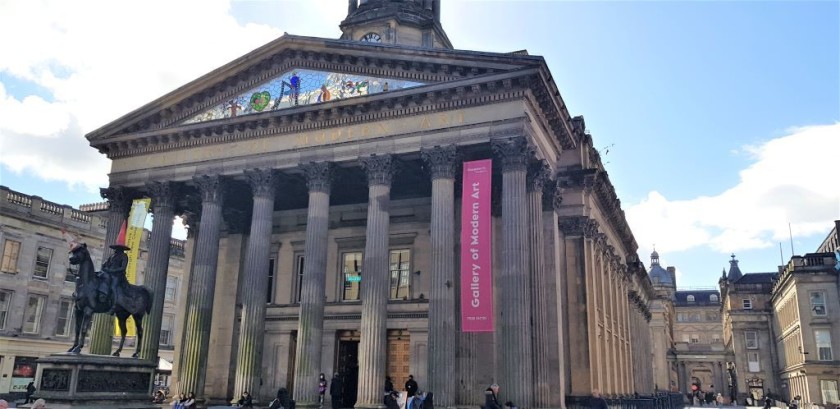
Glasgow Central is superbly located for access to the heart of the city, the Gallery of Modern Art and the Willow Tea Rooms are within a 5 minute walk of the station - turn right on to Gordon Street.
Though an unusual feature of Glasgow is that many of its most popular attractions are outside the city centre.
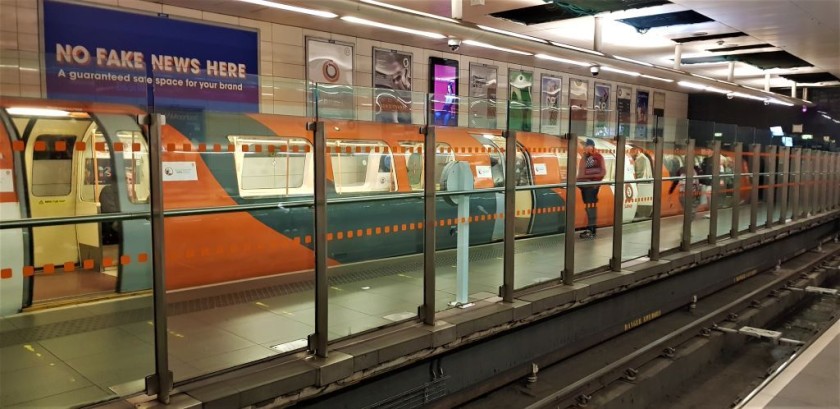
Taking the subway
Most of those popular attractions in the city are most easily reached by using the Glasgow Subway, but it doesn’t have a station at Glasgow Central.
Its nearest station is St Enoch, which is best accessed by using the secondary exit at Glasgow Central station on to Argyll Street, turn left from this exit and St Enoch is a 5 min walk away.
This Argyll Street exit is beneath the station, so you need to head down the escalators - They also connect the main part of the station, to platforms 16 and 17, as these are located underground.
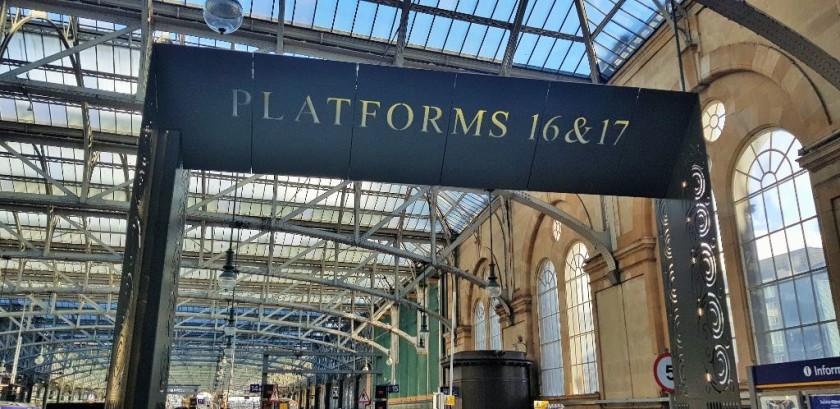
by local train
Alternatively local trains from platform 17 go to Partick, which is three stops from Glasgow Central and Partick station offers an interchange with the Glasgow Subway
Though in common with all of the stations on the Subway, the access to and from the trains at Partick is NOT step-free.
From Partick it’s a one station hop on the subway to Kelvinhall, the closest station to the Kelvingrove gallery and museum, or a two station hop to Hillhead, the nearest station to the Rennie Mackintosh Museum.
The easiest access to the splendid Riverside Museum of Transport from Glasgow Central station is to take a train to Partick to connect with bus route / line 100
Those trains from platform 17 at Glasgow Central to Partick also call at Exhibition Centre station, which is by the SECC, The Hydro and The Armadillo.~
The closest station to The Burrell Collection is Pollokshaws West - there are typically four trains per hour, which depart from the platforms accessed from the main concourse.
How to transfer to Glasgow Queen Street station
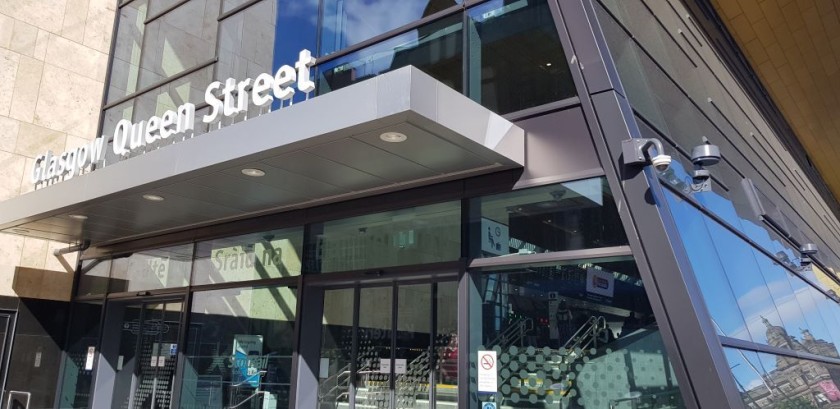
Trains from Glasgow to destinations to the north, including Aberdeen, Dundee, Fort William, Inverness, Oban, Perth and Stirling, depart from a separate station named Glasgow Queen Street.
It is located a 12 – 20min walk away from Glasgow Central on mainly traffic-free roads, the route is:
1. Use the main exit from Glasgow Central on to Gordon Street, the exit that will be directly ahead when you step off a train.
2. Turn right on exiting the station and walk down Gordon Street until you come to Buchanan Street and turn left on to it.
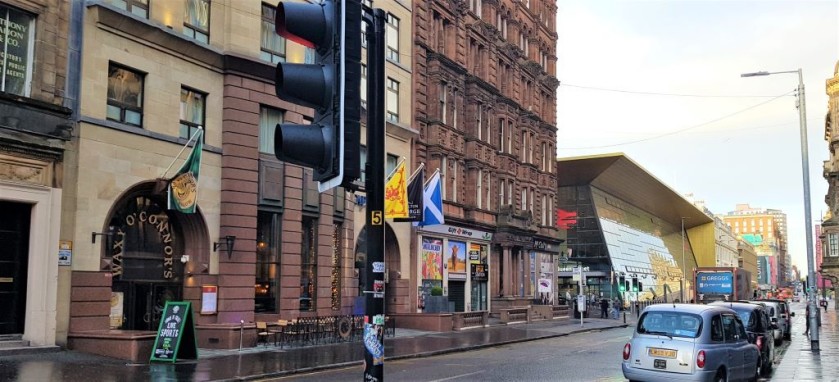
3. Walk down Buchanan Street until you come to West George Street, which will be on the right; Ahead of you on Buchanan Street, you will see a glass box, which is one of the entrances to Buchanan Street subway station.
Turning into West George Street you will see Queen Street station over to the left.

4. Steps away on West George Street, you'll see the new entrance to Glasgow Queen Street station.
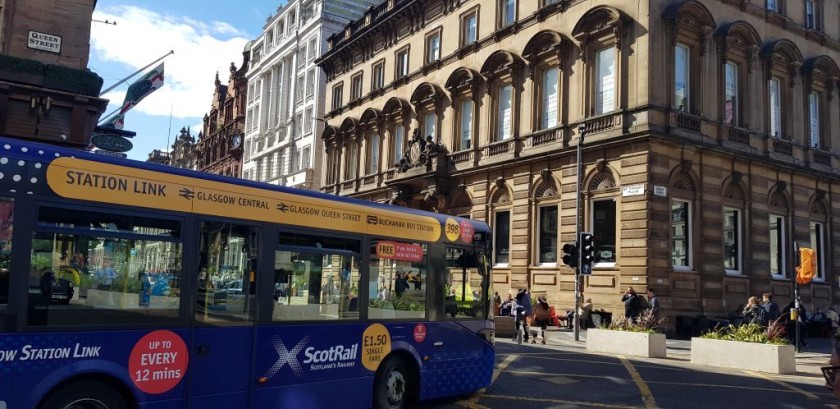
Or if you don’t want to walk, there is a free shuttle bus which leaves from a stop outside the Gordon Street exit, every 15 mins.
Alternatives to making the transfer between stations in Glasgow:
Although it’s feasible to avoid having to make the transfer between Central and Queen Street station at all, when travelling by train between destinations to the north and south of Glasgow.
There are now more trains than used to be the norm between cities including Birmingham, Carlisle Lancaster and Manchester to Edinburgh Haymarket station; and there are trains between that station in Edinburgh (and Edinburgh Waverley) and Aberdeen, Dundee, Inverness, Perth and Stirling.
If you will be travelling via Glasgow by daytime train to or from the West Highland Line and its services to Fort William, Mallaig and Oban, an option is to travel between Glasgow Central and Dalmuir and make connections there with the West Highland Line trains.
There are 2 – 4 x trains per hour between Glasgow Central and Dalmuir, they depart from platform (track) 17 in the underground part of Glasgow Central.
Are there cafes or restaurants available?
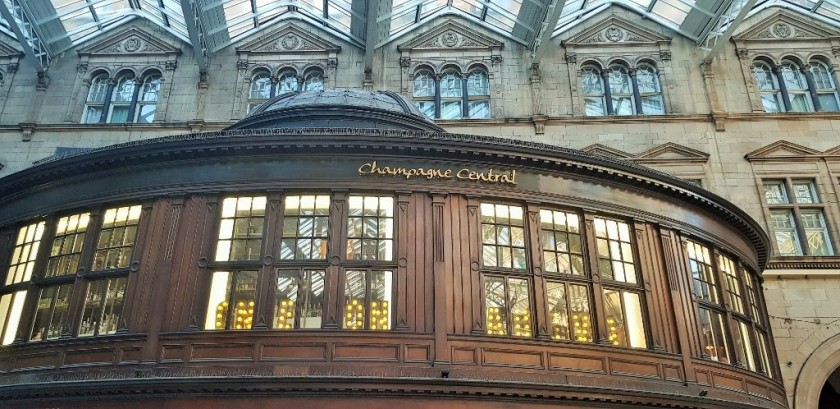
There are multiple food and drink outlets available in Glasgow Central, though the ultimate pre and post-travel experiences are available in the adjacent Grand Central hotel.
Are there left luggage facilities?
Yes, there is a facility managed by The Excess Baggage Company, which is located by the entrance to platform 1.
Does the station have a First Class lounge?
There is a lounge which can be used by holders of First Class tickets to travel by the Avanti West Coast trains.
Book Accommodation
When planning a trip, finding convenient accommodation can be trickier than working out which train to take.
Hence ShowMeTheJourney has partnered with the innovative accommodation portal, Stay 22, to offer three options for discovering your optimum accommodation:
1: Use the map above to see which hotel rooms and Vrbo rentals, with easy access to Glasgow Central, are available.
2: Or click on these cherry-picked properties, offered by Stay 22 partner Booking.com, which are by Glasgow Central and have been selected on the basis of high guest ratings:
ibis Styles Glasgow Centre George Square
3: Or see what's available with Stay 22's accommodation partners; which include, Expedia, Hotels.com and Trivago - by clicking the large button below.
Stay 22 will 'shuffle' the booking services so that you can be automatically directed to its partner that currently has the optimum availability at this location.
Please support ShowMeTheJourney
This second version of ShowMeTheJourney is exciting and new, so we are genuinely thrilled that you are here and reading this, but we also need your help.
We’re striving not to let anything get in the way of providing the most useful service possible, hence a facility has been set up with DonorBox which can be used to support the running costs and make improvements.
Instead of advertising or paywalls, your financial support will make a positive difference to delivering an enhanced service, as there’s a lot of ideas which we want to make happen.
So if you have found the info provided here to be useful, please go here to say thank you.
Journeys
# Jump to a directionJourneys from Glasgow Central
Jump to directionsGlasgow to Ardrossan by train
Glasgow to Birmingham by train
Glasgow to Leeds by train
Glasgow to Liverpool by train
Glasgow to London by train
Glasgow to Manchester by train
Glasgow to Oxenholme by train
Glasgow to Penrith by train
Glasgow to York by train
Journeys to Glasgow Central
Jump to directionsLondon to Glasgow by train
Manchester to Glasgow by train
This second version of ShowMeTheJourney is exciting and new, so we are genuinely thrilled that you are here and reading this, but we also need your help.
We’re striving not to let anything get in the way of providing the most useful service possible, hence a facility has been set up with DonorBox which can be used to support the running costs and make improvements.
Instead of advertising or paywalls, your financial support will make a positive difference to delivering an enhanced service, as there’s a lot of ideas which we want to make happen.
So if you have found the info provided here to be useful, please consider saying thank you.

This is one of more than 100 train travel guides available on ShowMeTheJourney, which will make it easier to take the train journeys you want or need to make. As always, all images were captured on trips taken by ShowMeTheJourney.





